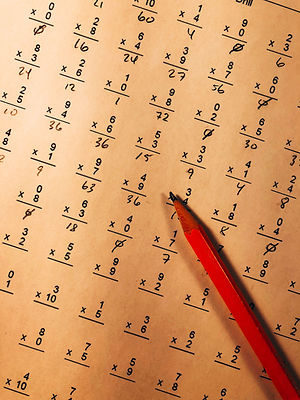
MathBait™ Multiplication
What is Multiplication?
Share this resource!
Helps students make sense of what multiplication is really is in this activity ideal for transitioning from skip counting to formal multiplication.
Details
Resource Type
Activity
Primary Topic
Multiplication
Unit
3
Activity
3
of
19
Now that students have been formally introduced to the multiplication symbol as well as the term "multiplication", this is a great time to dive into what multiplication means. Notice we have intentionally held back on this previously. Our program waits to introduce the meaning of multiplication and ways to interpret products until students already feel confident in their skills from building on skip counting. This helps reduce cognitive dissonance and misunderstandings and promotes a positive feeling around fact fluency and multiples.
The best way to explain multiplication is for students to "discover" the meaning on their own. This activity is designed as an exploration; allow students to drive the conversation and share their thoughts.
Provide students with graph paper. This activity can be completed with coloring, cutting, or folding. You may allow students to select their medium or choose a medium that works best for your classroom.

We will be counting by 3's. If coloring, have students color bars of length three to create a graph up to about 12. For cutting, cut out the bars, and if folding, provide students with four bars of length 12 and allow them to fold to create the multiplies of three. (Note: if cutting or folding, little hands may have difficulty with small pieces. You can create wider three-strips to help accommodate developing fine motor skills).
Ask students what they notice and wonder about the bars they have created. They created the bars using skip counting, is there another way they know how to make 3, 6, 9, and 12?
The goal is to lean into repeated addition and help students to see that skip counting is simply adding the same amount each time. When we count by 1's, we are adding 1 (demonstrate if needed, starting at 1, 1+1=2, 2+1=3, ...). Counting by 2's can also be accomplished by adding 2, and so on and so forth. In this way, multiplication can save us a lot of time. Is it easier to write 3+3+3+3+3 or 3×5?
Continue the conversation and ask students to compare their 3-bar and their 6-bar, what is similar and what is different? The goal of this conversation is to help students see the 6-bar is constructed of two 3-bars and is thus twice the size. If students are not familiar with words like "twice", this is a good time to introduce the terminology. You might ask how many of the 3-bars can fit into one 6-bar. Explain that multiplication has the power to "scale" items or change their size. We love to use a Honey, I Shrunk the Kids or similar example to imagine taking something and drastically increasing its size.
The purpose of this activity is simply to allow students to play with the idea of multiplication. They have already mastered skip counting, now it's time to think about how this power is useful. If time permits and students would benefit from additional exploration, encourage them to be the wizard and cast enlargement spells on items. Students can begin using graph paper to draw an item (like an apple, ant, flower, etc.) and then use their wizardry to enlarge the item. Use the markings on the graph paper to help guide them. For instance, to turn an ant that is 3 squares long 5 times its size we would need to make the length that of five 3-bars (or 15).
Once students have a good feel for how their skip counting skills can be used as repeated addition and scaling, move on to Activity 3.
The material on this page is copyrighted by MathBait™. Please use and enjoy it! MathBait™ provides a temporary license for Non-Commercial purposes. You are not permitted to copy, distribute, sell, or make derivative work without written permission from MathBait™.
Tell us what you think!
Click to rate this activity

